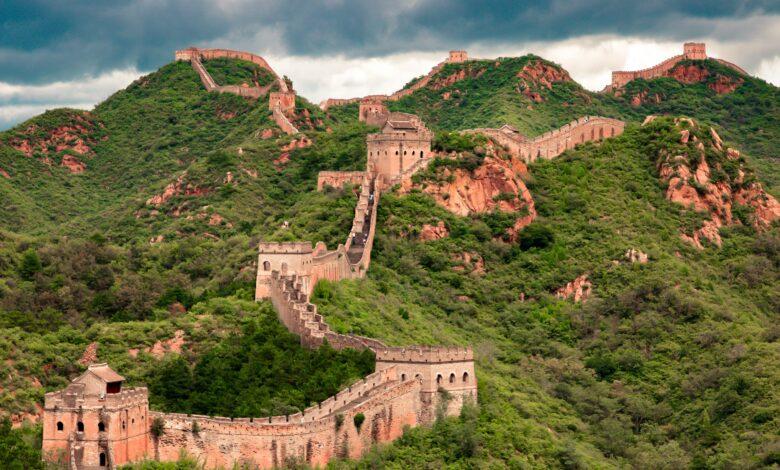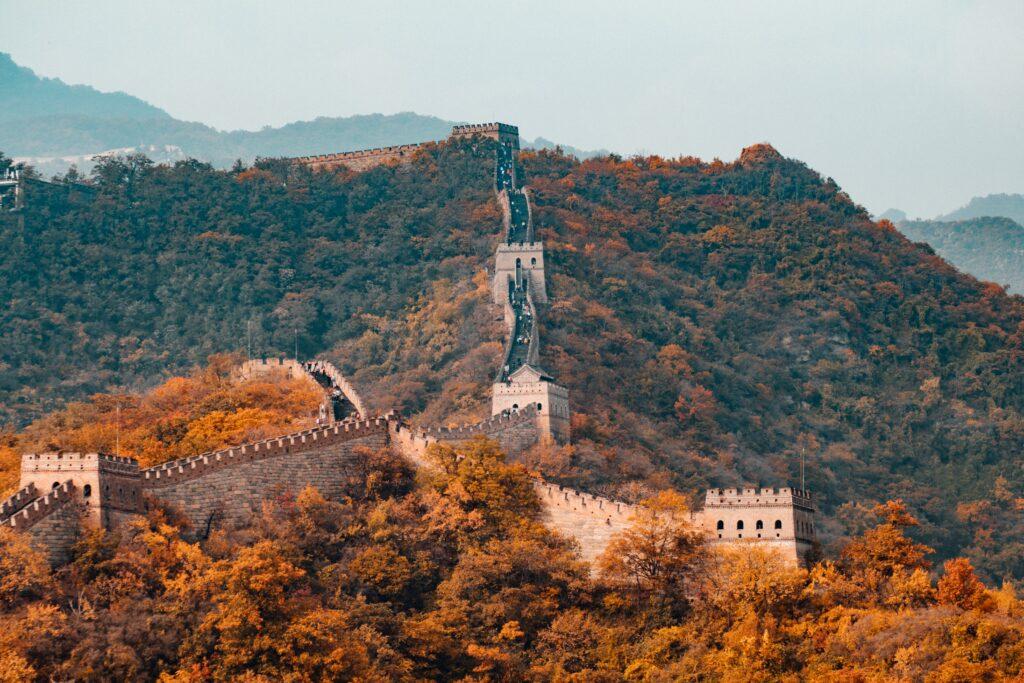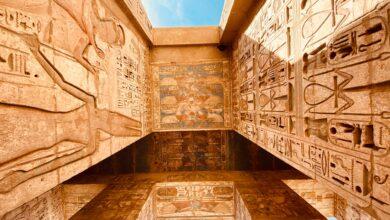🏯 Exploring the Great Wall of China: From Beijing to Mutianyu 🚶♂️
Unveiling the Magnificence of China's Great Wall: A Journey from Beijing to Mutianyu

Introduction
China’s Great Wall stands as a testament to human ingenuity and determination, a marvel that has withstood centuries of history and remains one of the world’s most iconic landmarks. This ancient fortification, a UNESCO World Heritage site, snakes its way across the Chinese landscape, and our journey begins in the bustling metropolis of Beijing, leading to the enchanting Mutianyu section of the wall.
The Great Wall is not just a physical barrier but a link to China’s rich past, a symbol of resilience, and a monument to the nation’s enduring spirit. As we explore the journey from Beijing to Mutianyu, we will unveil the secrets, stories, and natural beauty that make this experience truly remarkable.
Getting to Beijing
When planning a trip to Beijing, it’s essential to make well-informed choices regarding your flights and accommodations. To ensure a smooth journey, here are some tips to consider.
Flights to Beijing: Beijing is well-connected to the world through its major airports, with Beijing Capital International Airport being the primary gateway. Numerous airlines offer direct and connecting flights to Beijing from various international destinations. To find the best deals, consider booking your flights well in advance and be flexible with your travel dates. Use online travel platforms to compare prices, and keep an eye out for promotions or discounts.
Accommodations in Beijing: Beijing offers a wide range of accommodation options, from luxurious hotels to budget-friendly hostels. When selecting your place to stay, consider factors such as location, amenities, and budget. Staying in the city center, near attractions like the Forbidden City and Tiananmen Square, can be convenient for exploring Beijing’s cultural and historical highlights.
Exploring Beijing’s Cultural and Historical Highlights
Beijing is a city steeped in history and culture, with a plethora of attractions to explore. To make the most of your visit, here are some recommendations for discovering Beijing’s rich heritage.
The Great Wall of China: A visit to Beijing is incomplete without exploring the Great Wall of China. The Mutianyu or Badaling sections are easily accessible from the city and provide breathtaking views of this iconic landmark. Consider hiring a local guide to gain insights into the wall’s history and significance.
The Forbidden City: The Forbidden City is a UNESCO World Heritage site and the former imperial palace of China. Wander through its magnificent halls, courtyards, and gardens to immerse yourself in the imperial history of China. Don’t forget to visit the Palace Museum within the complex for a deeper understanding.
Tiananmen Square: Tiananmen Square, the world’s largest public square, is surrounded by significant landmarks such as the Tiananmen Gate and the Monument to the People’s Heroes. It’s an essential stop for anyone interested in Chinese history and culture.
The Temple of Heaven: This ancient complex is a marvel of Chinese architecture and a place where emperors once prayed for a good harvest. Explore the Hall of Prayer for Good Harvests and the Circular Mound Altar, both with intricate designs and symbolism.
Hutongs and Courtyards: To experience traditional Beijing life, venture into the city’s historic hutongs (narrow alleys). You can even book a guided rickshaw tour to explore these ancient neighborhoods and courtyard homes.
By following these tips on travel and exploration, you can make the most of your visit to Beijing and create lasting memories of this culturally rich and historically significant city.
The Great Wall of China
History and Purpose of the Great Wall
The Great Wall of China, one of the world’s most iconic architectural marvels, has a history dating back over 2,000 years. It wasn’t a single continuous wall but rather a series of walls, fortifications, and trenches. The primary purpose of the Great Wall was to protect ancient China from invasions and raids by nomadic tribes, particularly the Mongols and the Xiongnu. The construction of the wall began as early as the 7th century BC, during the Warring States period, and continued throughout various dynasties, including the Qin, Han, and Ming. It served as a physical and symbolic barrier, showcasing the might and determination of the Chinese civilization.
Different Sections of the Great Wall
The Great Wall is not a uniform structure; it’s a collection of different sections, each with its unique characteristics and historical significance. These sections vary in terms of accessibility, preservation, and scenery. Some of the most famous sections include Badaling, Jinshanling, Simatai, and Mutianyu.
Badaling: Known for its well-preserved condition, Badaling is one of the most visited sections of the Great Wall. Its proximity to Beijing makes it easily accessible, but it can get crowded due to its popularity.
Jinshanling and Simatai: These sections offer a more rugged and less crowded experience. They are known for their stunning vistas and are popular choices for hiking enthusiasts looking for a challenging trek.
Highlighting Mutianyu as the Main Destination
Mutianyu, located about 70 kilometers northeast of Beijing, is often considered the ideal destination for experiencing the Great Wall. It strikes a perfect balance between accessibility, scenic beauty, and historical significance. The Mutianyu section is renowned for its well-preserved fortifications, magnificent watchtowers, and stunning natural surroundings.
What sets Mutianyu apart is its breathtaking scenery, surrounded by lush forests and rolling hills. Visitors can choose to hike the wall, take a cable car for a more comfortable ascent, or ride a thrilling toboggan back down. With fewer crowds compared to Badaling, Mutianyu offers a more serene and authentic Great Wall experience.
The watchtowers at Mutianyu are not only historically significant but also provide excellent vantage points for panoramic views of the wall snaking through the picturesque landscape.

Exploring Mutianyu
The Mutianyu section of the Great Wall is a gem among the various segments of this iconic monument, offering a unique and enriching experience for travelers. Here, we’ll delve into its key features, provide helpful tips for navigating the area, and share personal experiences that make it a must-visit destination.
Key Features and What Sets Mutianyu Apart
Mutianyu is often regarded as the most picturesque and well-preserved section of the Great Wall near Beijing. What sets it apart are its remarkable features:
- Spectacular Scenery: Mutianyu is surrounded by lush, green forests and rolling hills, creating a stunning backdrop for your Great Wall adventure. The breathtaking views from the wall are truly mesmerizing.
- Historical Significance: This section of the wall dates back to the Northern Qi Dynasty (6th century) but was reconstructed during the Ming Dynasty (14th to 17th centuries). The wall here boasts excellent preservation, allowing visitors to step back in time and appreciate its architectural grandeur.
- Fewer Crowds: While still popular, Mutianyu generally sees fewer tourists than the more famous Badaling section. This means you can explore the wall with greater serenity, capturing those picture-perfect moments without the hustle and bustle.
- Restored Watchtowers: The watchtowers at Mutianyu have been painstakingly restored, providing you with the opportunity to explore and even climb to their upper levels, offering panoramic views of the surrounding landscape.
Tips for Navigating Mutianyu
To make the most of your visit to Mutianyu, consider these tips:
- Entrance Fees: There is an entrance fee to access Mutianyu. Prices may vary depending on the season, so it’s a good idea to check in advance. Also, consider booking tickets online to save time and avoid queues.
- Cable Cars and Toboggan Rides: Mutianyu offers both cable car rides to reach the wall and toboggan rides to descend. The cable car is a convenient way to ascend if you prefer a more leisurely experience, while the toboggan is a fun and adventurous way to return to the base.
- Hiking Options: If you’re an avid hiker, consider walking up the wall or taking the cable car up and hiking down. The hike offers a more intimate experience with the wall and its surroundings.
Personal Experiences and Stories
Visiting Mutianyu is an unforgettable experience. Personal stories and anecdotes often include encounters with friendly locals who share their insights into the area’s history and culture. The sense of awe when standing atop the wall, absorbing the panoramic views, and realizing the historical significance is a memory that lingers long after the visit.
Exploring Mutianyu is like taking a step back in time while being surrounded by the beauty of nature. It’s a place where history, nature, and adventure come together to create an experience that will stay with you forever.
Immersing in History
Visiting the Mutianyu section of the Great Wall is not just about admiring its physical grandeur; it’s a journey through time, immersing yourself in the historical significance of this remarkable structure. Here, we’ll explore the stories and history that make Mutianyu a captivating historical experience.
Historical Significance and Stories Behind Mutianyu
Mutianyu’s historical roots run deep, tracing back to the Northern Qi Dynasty in the 6th century. However, it gained its present form during the Ming Dynasty (14th to 17th centuries) under the supervision of General Xu Da. The wall’s strategic location, guarding the crucial northern frontier, played a pivotal role in China’s history. It was not only a physical barrier but also a symbol of China’s enduring civilization and determination to protect its sovereignty.
One remarkable story associated with Mutianyu is that of the “White Stupa.” The White Stupa is a monument built on the wall, signifying a treaty between the Ming Dynasty and the Mongols. It serves as a testament to peaceful resolutions amidst the turbulent history of the Great Wall.
Exploring the Watchtowers and Their Role in Defending the Wall
As you traverse Mutianyu, you’ll come across a series of watchtowers that were integral to the wall’s defense. These watchtowers had a dual purpose: to provide strategic vantage points for surveillance and to house troops and equipment.
The towers are not just architectural marvels; they are time capsules that transport you to an era when they served as the eyes and ears of the Great Wall. Visitors can climb the towers, appreciating the intricate designs and craftsmanship while imagining the watchmen on duty centuries ago, diligently guarding against potential invasions.
Special Events and Reenactments for a Historical Experience
For a more immersive historical experience, check if there are any special events or reenactments taking place during your visit to Mutianyu. Occasionally, you may find historical reenactments, where actors in period costumes depict scenes from the wall’s history. These events bring the past to life and provide valuable insights into the daily life of soldiers and inhabitants along the wall.
Additionally, some cultural festivals and celebrations are held at Mutianyu, offering a chance to witness traditional ceremonies and performances that showcase China’s rich history and heritage.
Shopping for Souvenirs
A trip to the Great Wall of China, particularly the Mutianyu section, is an experience worth commemorating with unique souvenirs and gifts. Here, we recommend some places to find exceptional Great Wall memorabilia and introduce you to local artisans crafting handcrafted items that make for meaningful keepsakes.
Places to Buy Unique Great Wall Souvenirs and Gifts
- Mutianyu Souvenir Shops: The Mutianyu area has its own souvenir shops that offer a variety of Great Wall-themed items, from T-shirts and postcards to traditional Chinese handicrafts. These shops are convenient for picking up mementos before or after your Great Wall adventure.
- Gubei Watertown: Located near the Simatai section of the Great Wall, Gubei Watertown is a picturesque ancient town with quaint shops that sell unique souvenirs. Here, you can find artistic pieces, such as calligraphy, paintings, and pottery, that reflect the Great Wall’s charm.
- Local Markets in Beijing: If you prefer shopping in the city, explore local markets like Panjiayuan Antique Market and Hongqiao Pearl Market. These bustling markets are known for their vast array of goods, including antiques, traditional Chinese art, and jewelry, all of which can serve as memorable Great Wall souvenirs.
- Online Marketplaces: Numerous online marketplaces feature a wide selection of Great Wall souvenirs and memorabilia. Websites like Taobao and Alibaba offer a convenient way to purchase items directly from Chinese artisans and manufacturers.
Local Artisans and Handcrafted Items
- Chinese Calligraphers: Seek out local calligraphers who can create personalized artworks featuring Great Wall motifs. These handcrafted pieces not only make for beautiful souvenirs but also offer a deep connection to Chinese culture.
- Cloisonné Artists: Cloisonné is an ancient Chinese art form involving intricate enamelwork. Look for local artisans who specialize in creating cloisonné items such as vases, jewelry, and decorative items, often adorned with Great Wall designs.
- Silk Embroidery Craftsmen: Chinese silk embroidery is renowned for its intricate designs and exquisite craftsmanship. Visit workshops or markets where skilled artisans produce hand-embroidered items, such as scarves, wall hangings, and clothing, often featuring Great Wall motifs.
- Jewelry Makers: Local jewelers often create unique pieces inspired by the Great Wall. You can find exquisite jewelry items like necklaces, bracelets, and earrings that incorporate elements of the wall’s design.
FAQs
Q. Is it safe to visit the Great Wall of China?
A. Yes, the Great Wall is a safe destination, but always be cautious and follow the rules and guidelines.
Q. How long does it take to explore Mutianyu?
A. It usually takes about 2-3 hours to explore the Mutianyu section thoroughly.
Q. Can I hire a guide at Mutianyu?
A. Yes, you can hire a local guide to get more insights into the history and culture of the Wall.
Q. Are there restaurants or food stalls at Mutianyu?
A. There are a few restaurants and food stalls at the base of Mutianyu, but it’s a good idea to bring snacks and water.
Q. What’s the best way to reach Mutianyu from Beijing?
A. The most convenient way is to hire a private driver or join a tour group for a hassle-free journey.
Q. Are there restroom facilities at Mutianyu?
A. Yes, there are restroom facilities available at the entrance and exit of the Mutianyu section.
Conclusion
Our adventure from Beijing to Mutianyu has been an immersive journey through time, history, and unparalleled natural beauty. The Great Wall of China stands as a testament to human achievement, offering a glimpse into the profound history of this ancient land. From the moment you set foot on this awe-inspiring structure, you’re welcomed into a world of wonder, where history whispers in the wind, and every stone has a story to tell.
We hope this blog post has piqued your interest and inspired you to embark on your own adventure to explore the Great Wall of China. Remember, the path from Beijing to Mutianyu is not just a physical journey; it’s a voyage through history and a connection with a remarkable civilization. So, pack your bags, follow the footsteps of emperors and soldiers, and be prepared to create your own story amidst the Great Wall’s grandeur.





Facebook Comments